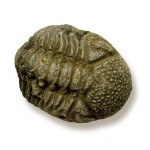Product Description
FOUND AROUND THE WORLD.
The fossil remains of turritella are the shells or the cast of shells from soft-bodied mollusks. Turritella are a type of sea snail with tall spiral shells. They vary in size from about 1/2 inch to 6 inches long.
Turritella is a genus of medium-sized sea snails with an operculum, marine gastropod mollusks in the family Turritellidae. They have tightly coiled shells, whose overall shape is basically that of an elongated cone.
Origin Of the Name:
The name Turritella comes from the Latin word turritus meaning “turreted” or “towered” and the diminutive suffix -ella
Interesting Facts:
Folk names: Sponge, Witch stone, ammonite, snake tone , & draconites. Fossils are the remains or the negative impressions of ancient creatures that dies millions of years ago.
Where Is It Found:
During the Mesozoic (~245-65 million years ago) the ammonites, a relative of the modern chambered nautilus, flourished and are an important part of the fossil record, but they became extinct at the end of the Cretaceous at the same time as the dinosaurs. Many types of clams and snails also disappeared at the end of the Cretaceous, including the rudists, a group of bivalved mollusks that lived much as modern reef-building organisms do. The disappearance of these marine animals opened up environmental niches to be filled by a radiation of new species of all types of animals at the beginning of the Cenozoic.
The Erminger Turritellenplatte (“Turritella plate of Ermingen”) near Ulm, Germany is a rocky outcrop situated in the northern part of the North Alpine Foreland Basin. It is famous for its superabundance of Turritella turris shells within its sediments and dates from the Burdigalian.
What Do We Do With It:
“Turritella agate” is not made of fossil snails of the genus Turritella. The rock in which they are so abundant varies from a soft sandstone to a dense chalcedony. It is this dense silicified rock that is so popular with gem and mineral hobbyists, and also with purveyors of “new age” ideas such as crystal healing.
Metaphysical Use:
Fossils represent time, eternity and evolution. Fossils are used as power tools by shamans throughout the world to amplify energy.







